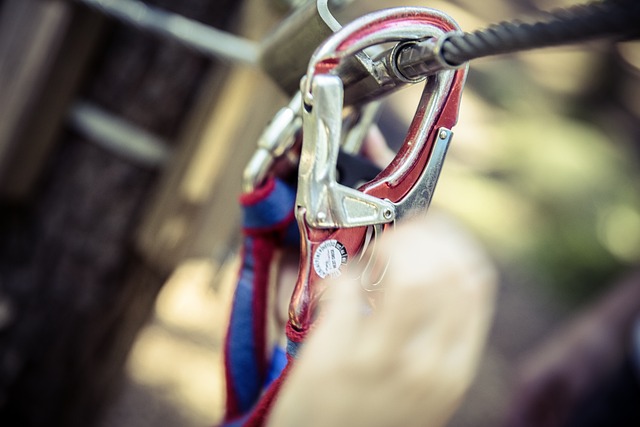Treetop adventures are a thrilling way to experience nature from a unique perspective. Suspended high up in the trees, adventurers can challenge themselves physically while enjoying the beauty of the surrounding environment. Treetop Adventures offer a great way to get active, have fun, and enjoy the outdoors.
In this article, I will explore the different types of treetop adventures, including zip lining, canopy tours, aerial adventure parks, and sky bridges. Each adventure has its own unique features, offering a different experience for adventure-seekers. I will also discuss the importance of safety measures when participating in treetop adventures. Let’s dive in and explore the exciting world of treetop adventures!
Zip Lining
Zip lining is one of the most popular treetop adventures. It involves propelling oneself along a suspended cable or rope while wearing a harness. Zip lining offers a thrilling experience as participants soar through the air, suspended high above the ground. Here are some details on the different types of zip lining experiences.
Zip lining involves gliding through the air along a suspended cable or rope. Participants are secured in a harness and propelled by gravity, usually starting from a high platform or tower. There are various types of zip-lining experiences available for different levels of thrill-seekers:
- Classic zip lining: This is the most common type of zip lining, usually involving shorter and less challenging lines. It is a great introduction to the activity for beginners.
- Super zip lining: Super zip lining involves longer and faster lines with steeper drops, offering a more intense experience.
- Mega zip lining: Mega zip lining involves multiple lines, usually over varied terrain, and often involves zipping through obstacles like trees or rocks. It is the most challenging type of zip lining experience.
The equipment used for zip lining includes a harness, a pulley system, a cable or rope, and a braking mechanism. Participants are usually required to wear helmets and gloves for safety.
Canopy Tours
Canopy tours offer a unique way to explore treetops. Participants travel through the forest on suspended bridges and platforms, offering breathtaking views of the surrounding nature. Canopy tours involve traveling through the treetops on suspended bridges and platforms, offering a unique and exciting view of the forest. Participants are often accompanied by guides who provide information about the surrounding flora and fauna. There are two main types of canopy tours:
- Platform-to-platform tours: This type of tour involves traveling between platforms, usually via a series of bridges and zip lines. It is a great option for beginners and families.
- Tree-to-tree tours: Tree-to-tree tours are more challenging and involve traveling from tree to tree, usually via a series of rope bridges and zip lines. They offer a more immersive experience for adventure-seekers.
The equipment used for canopy tours includes a harness, helmet, and safety lines. The bridges and platforms are constructed using sturdy materials, and safety measures are in place to ensure the safety of participants.
Aerial Adventure Parks
Aerial adventure parks offer a variety of challenges and obstacles for participants to navigate while suspended high in the trees. These parks are designed to challenge participants’ balance, agility, and strength, making them a great option for those seeking a physical challenge.
Aerial adventure parks are obstacle courses constructed high in the trees. Participants navigate the course while suspended from safety lines and tackling various obstacles, such as ropes courses, zip lines, and climbing walls. There are three main types of obstacles in aerial adventure parks:
- Obstacle courses: Obstacle courses involve navigating a series of challenging elements, such as balance beams, rope bridges, and swinging logs.
- Climbing walls: Climbing walls offer a unique challenge, as participants climb up a wall while suspended in the air.
- Ropes courses: Ropes courses are similar to obstacle courses, but involve more complex elements, such as tightropes and cargo nets.
The equipment used for aerial adventure parks includes a harness, helmet, and safety lines. The obstacles and courses are designed to be challenging but safe, with safety measures in place to ensure the well-being of participants.
Sky Bridges
Sky bridges offer a thrilling way to experience the treetops. These bridges are suspended high above the ground and provide a unique perspective of the surrounding nature. Sky bridges are suspended walkways or bridges that span between trees or other structures. They offer a thrilling and unique experience, as participants walk high above the ground. There are two main types of sky bridges:
- Suspended sky bridges: Suspended sky bridges are suspended by cables or ropes and can sway or move with the wind. These bridges offer a more dynamic and challenging experience.
- Fixed sky bridges: Fixed sky bridges are securely anchored to the trees or structures and do not move. These bridges are more stable and offer a more relaxed experience.
The equipment used for sky bridges includes a harness and safety lines. Participants are usually required to wear helmets and gloves for safety. The bridges are designed to be sturdy and secure, with safety measures in place to ensure the well-being of participants.
Safety measures for treetop adventures
Treetop adventures can be thrilling and memorable experiences, but it’s important to prioritize safety when participating in these activities. Safety measures are crucial for preventing injuries and ensuring the well-being of participants. Treetop adventures can involve significant heights and physical challenges, so it’s essential to follow safety guidelines and procedures.
Common safety measures
- Helmet: Participants are usually required to wear helmets to protect their heads in case of falls or collisions.
- Harness: Harnesses are used to secure participants to safety lines, preventing them from falling or losing their balance.
- Safety briefing: Before starting a treetop adventure, participants should receive a safety briefing that covers the equipment, rules, and emergency procedures.
- Safety lines: Safety lines are used to secure participants in the course and prevent falls. Participants should remain attached to the safety lines at all times while on the course.
It’s essential to know the emergency procedures for the treetop adventure course in case of an accident or injury. Participants should be familiar with the emergency stop procedure and know how to call for help if necessary.
Conclusion
In conclusion, there are different types of Treetop Adventures each offering an exciting way to experience nature and challenge oneself physically. Zip lining, canopy tours, aerial adventure parks, and sky bridges all offer unique experiences for adventure-seekers. However, it’s important to prioritize safety when participating in these activities, by wearing proper equipment, following safety guidelines, and knowing emergency procedures.
Treetop adventures offer an opportunity to disconnect from the hustle and bustle of everyday life and immerse oneself in nature. They are a great way to get active, have fun, and create lasting memories. I encourage everyone to experience the thrill and beauty of treetop adventures but to always prioritize safety to ensure a positive and enjoyable experience.








